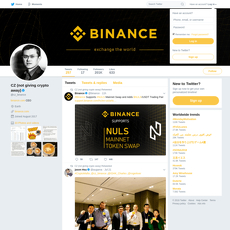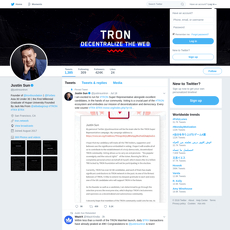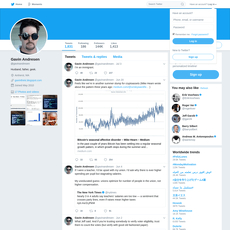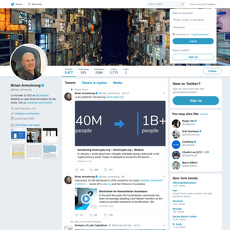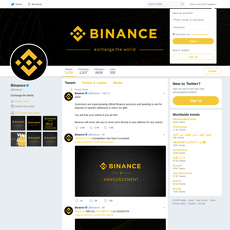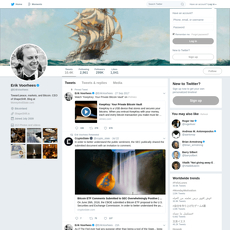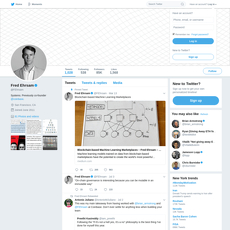Jon Matonis Review
Jon Matonis
twitter.com
Jon Matonis (@jonmatonis) Review Guide: Everything You Need to Know + FAQ
Ever wonder if following @jonmatonis is worth your time? If you care about Bitcoin history, monetary policy, and sharp commentary that actually helps your research, you probably don’t want another noisy feed clogging your brain.
In this guide, I break down what you’re likely to get from his timeline, how I think about credibility, and how to turn his posts into a practical edge—without living on Twitter.
The problem with Crypto Twitter (and why your feed might be failing you)
Crypto Twitter is a firehose. It rewards hot takes and outrage more than accuracy and context. If you’re not careful, it can waste time and warp your judgment.
- Engagement over insight: Viral threads often prioritize speed and emotion over sourcing. A 2018 Science study found that false news spreads “farther, faster, deeper” on Twitter than true news, especially for political and economic topics (Vosoughi, Roy, Aral).
- Headline skimming = bad decisions: Many users get their “news” from social timelines, which are built for attention, not rigor. Pew shows large shares of adults now get news on social platforms—context matters when assessing credibility (Pew Research, 2023).
- Noisy feeds burn time: If you follow generalists or hype accounts, you’ll spend hours sorting signal from fluff and still miss what impacts policy, liquidity, or adoption.
- Secondhand misreads: Tweets that summarize papers or laws often get details wrong. One missed nuance in a central bank memo or a regulatory draft can flip the takeaway.
Crypto Twitter can be powerful, but only if you follow people who point you to primary sources and real context—not just opinions.
Here’s a simple example: when a central bank hints at a CBDC pilot, many accounts post emotional takes. The useful ones link the actual speech or PDF and quote the lines that matter. That’s the difference between noise and an edge.
What you’ll get from this guide
I’ll show you what Jon Matonis typically posts, what he’s strongest at, what to watch for, and how to get value even if you’re not online all day. I’ll also cover the most common questions people ask about him so you can decide quickly if he belongs in your feed.
Who this is for
- Bitcoin-first thinkers who care about sound money and monetary history
- Founders, researchers, and analysts who want sources and context over hype
- Traders who prefer macro and policy signal to headline-chasing
- Anyone who values privacy, censorship resistance, and credible references
My framework for evaluating a crypto personality
I don’t follow people for entertainment. I want repeatable edge. Here’s how I assess whether someone earns a spot on my list.
- Track record: Have they been early and correct on meaningful Bitcoin or policy themes? Do older posts age well?
- Transparency: Are views and affiliations clear? Do they disclose conflicts or strong priors (e.g., Bitcoin-only)?
- Focus areas: Do they stay in their lane—monetary history, policy, tech—or chase whatever’s trending?
- Consistency: Are claims grounded in principles, or do they flip with sentiment?
- Sourcing: Do they link primary materials (laws, research, speeches) or just quote headlines?
- Primary-data pathways: How often do their posts send me to the original docs—central bank PDFs, hearing transcripts, on-chain data—so I can judge for myself?
Practical example of this filter in action:
- If someone comments on a digital euro update, I expect a link to the European Central Bank’s page or consultation materials, not a screenshot of a blog post (ECB digital euro).
- If they discuss inflation or money supply, I want sources like FRED, BIS, or a central bank speech—so I can check the raw numbers or the exact wording.
That’s the lens I’m using here. If Jon’s feed reliably points to primary sources, adds historical context, and sticks to an area where he has clear strength, that’s a big win for anyone who wants less noise and better decisions.
Curious how his background lines up with that framework and why his perspective might be worth your attention? Let’s look at who Jon Matonis is—coming up next.
Who is Jon Matonis? Quick background
Jon Matonis is one of those early Bitcoin names that keeps showing up when you trace the story back to the beginning. He’s a founding director of the Bitcoin Foundation, an outspoken writer on money and privacy, and a steady voice connecting Bitcoin to the broader history of monetary systems. Long before TikTok traders and meme cycles, he was writing about digital cash and the right to transact, pushing readers toward first principles.
If you’ve ever read about “sound money” and wondered who helped carry that torch into Bitcoin, you’ll find his fingerprints on essays, panels, and policy debates. His older writing on The Monetary Future and columns at Forbes built a bridge between cypherpunk ideas and the mainstream conversation about finance.
“I do not think it is an exaggeration to say history is largely a history of inflation, usually engineered by governments for the gain of governments.”
— Milton Friedman
That quote isn’t his, but it captures the current that runs through his work: money is political, inflation has roots in policy, and Bitcoin changes the incentives.
Areas of expertise you’ll notice
- Bitcoin as hard money: He frames BTC against monetary history—gold standards, fiat eras, and why scarcity matters. Expect references to core texts like the Bitcoin whitepaper and classic economic arguments (Hayek, Friedman, Selgin).
- Central banks and monetary policy: He pays close attention to how institutions move—from rate regimes to balance sheet policy to CBDC pilots. For context, he often points at work from the BIS or IMF when policy implications hit crypto.
- Privacy and censorship resistance: The right to transact is a recurring theme. When the digital euro or other CBDCs are in the news, he tends to zero in on privacy trade-offs and control vectors.
- Financial freedom and the cypherpunk ethos: He connects Bitcoin to a lineage that includes e-cash experiments, PGP, and challenges to permissioned finance—less hype, more history.
Public work you might recognize
- Essays and columns: His archive on The Monetary Future and his Forbes contributor page cover everything from e-cash to central bank policy to Bitcoin’s role in unstable regimes.
- Talks and interviews: He’s a regular on conference stages and podcasts, usually tackling topics like CBDCs, capital controls, and why Bitcoin’s design choices matter for ordinary people—not just traders.
- Bitcoin Foundation leadership: As a founding director, he helped push Bitcoin into public view at a time when it was still dismissed by most institutions. That early vantage point shows up in how he reads today’s policy headlines.
When you see major macro stories—currency crises, payment blacklists, CBDC updates—he tends to connect them to historical precedents. For example, if a central bank explores a retail CBDC, he’ll often highlight the BIS’s privacy frameworks and operational models so you can evaluate what’s marketing and what’s real policy risk. That habit of pointing to primary material is rare on social platforms, and it’s why I pay attention.
Why his perspective matters
Plenty of feeds chase price. Fewer explain how rules, incentives, and monetary plumbing set the stage for every cycle. His lens is useful if you care about:
- Seeing past the ticker: You get the “why” behind market swings—regimes, liquidity, and policy—rather than recycled narratives.
- Understanding trade-offs: CBDCs, sanctions, and KYC regimes aren’t abstract to him; they’re real levers that shape adoption and design choices for Bitcoin and banks alike.
- Protecting the right to transact: He treats privacy as a human right, not a luxury. If you’ve ever felt that finance should work for people, not against them, you’ll feel that thread in his work.
I like voices that make me stop and think, not just react. He’ll share a policy paper or a historical anecdote that reframes a headline, and suddenly a “crypto news” story turns into a bigger question about how money should work.
If that sounds like the kind of signal you want, you might be wondering: what actually shows up in your feed when you follow him—topics, examples, and how often he posts? Let’s look at that next, with real patterns you can use right away.
What you actually get from following @jonmatonis
If your timeline is a blur of price squiggles and memes, his feed feels like oxygen. It’s Bitcoin-first, clear about money and policy, and heavy on primary sources. When headlines scream, he points to the original document, the speech, or the historical note that actually explains why it matters.
Core content themes
Bitcoin vs. fiat money and inflationExpect sharp commentary that frames Bitcoin as hard money in contrast to politically managed currencies. You’ll see references to monetary history and the mechanics of dilution, often with sources you can read for yourself.
- Classic anchors like the Bitcoin whitepaper and monetary history notes (think gold convertibility and the end of Bretton Woods).
- Macro touchpoints such as central bank policy pages like the Federal Reserve’s monetary policy hub when rate moves or balance sheet shifts frame the conversation.
Privacy, censorship, and financial rightsThis is where the feed gets urgent. He’ll highlight cases where rules, sanctions, or platform policies collide with financial freedom—often pointing to the official text.
- Sanctions and enforcement actions (for example, the U.S. Treasury’s press release on Tornado Cash) to discuss code, speech, and jurisdictional overreach.
- He’ll call out the difference between privacy by default and privacy by permission—useful context if you build products or care about your threat model.
Macro signals, CBDCs, and regulatory shiftsHe regularly surfaces credible material on central bank digital currencies and the macro setup. Not hot takes—links that help you form your own.
- Primary research like the BIS hub on CBDCs: bis.org/topic/central-bank-digital-currencies.
- EU rulemaking that touches crypto, such as the MiCA regulation text in the EU’s Official Journal: eur-lex.europa.eu/eli/reg/2023/1114/oj.
- Digital euro updates from the ECB: ecb.europa.eu/paym/digital_euro.
Industry events and notable speeches/interviewsWhen a policy talk, hearing, or conference panel matters to Bitcoin’s future, expect a quick clip or a link to the full speech with a takeaway you can test against the source.
Posting style and cadence
Short, direct, and unafraid to take a stand. He doesn’t live-tweet every candle or farm engagement with bait. Posts cluster around meaningful macro news, policy drops, notable interviews, and historical anniversaries that tie back to money.
The ratio skews toward signal: fewer tweets, more links, and higher density per post. It’s the kind of feed you can check once or twice a day and still feel informed.
“Follow the links, not the likes.”
That’s the vibe. When a headline is swirling around Crypto Twitter, he’ll usually point to the official text and let you judge for yourself.
What to pay closest attention to
The links and the receipts. That’s where the value hides.
- Primary sources over summaries: If he shares a BIS note or an ECB consultation, open it. Skim the executive summary, then the conclusions and footnotes. You’ll spot the guardrails and caveats that headlines skip.
- Thread openers: When he posts a quote image or excerpt, check if there’s context in the thread. The first tweet sets the frame; the replies often add nuance or counterpoints.
- Policy language: Watch for specific clauses, timelines, and definitions in the documents he surfaces—effective dates and scope can make or break a strategy.
- Historical callbacks: If he references monetary history, it’s usually a prompt to re-read the original event speech or decree. Example: Nixon’s 1971 address ending convertibility—read the transcript to understand why inflation narratives keep circling back to that moment: presidency.ucsb.edu.
Quick example of how I use it in the real world:
- CBDCs in focus: He links the official hub from the BIS or a consultation from the ECB. I scan the scope (wholesale vs retail), the privacy model, and offline-payment sections. In the ECB materials (digital euro portal), you can track how “privacy” is framed as compliance-by-design. That single nuance can change how a wallet or merchant might prepare.
- Sanctions and censorship: With OFAC actions like the Tornado Cash designation (Treasury press release), I read the legal basis, then map the chilling effects on developers and platforms. That’s not a price call—it’s operational risk you can plan for.
If you’ve been craving fewer opinions and more originals, that’s what you’ll get. The catch? You’ve got to click through and read. So the next question is obvious: how much weight should you put on those links and his framing—and where do biases enter the picture? Let’s unpack that next.
Credibility check: strengths, biases, and how I weigh them
Strengths I value
If you’ve ever felt whiplash from crypto takes, Jon’s feed is the kind that steadies you. He’s strongest where most people are weakest: monetary history, policy, and the first principles of why Bitcoin exists. He’s got a consistent “freedom + sound money” lens, and when he hits on privacy or state control, he usually points you to something you can actually read and verify.
- Monetary-history fluency: When he references bank bail-ins as a Bitcoin origin story, that’s not myth-making. Cyprus 2013 really happened. It’s a useful mental model for why self-custody matters.
Source: BBC: Cyprus parliament backs bailout - Privacy and policy receipts: He often flags the Financial Action Task Force’s “Travel Rule,” which reshaped how exchanges handle user data. That’s not a vibe—there’s a paper trail.
Source: FATF Guidance: VASPs and the Travel Rule - CBDC skepticism with sources: If he warns that CBDCs are programmable and potentially invasive, you’ll find the same concerns in central bank literature (design choices, privacy trade-offs).
Sources:
BIS: CBDC foundational principles |
ECB: Digital euro work and privacy consultations - Pointing to first-order data: He’ll share speeches, research, or legal texts rather than recycled threads. That keeps you close to reality and away from broken telephone takes.
“Trust, but verify—especially when your money is at stake.”
Potential biases to note
He’s Bitcoin-first. That can be a feature if you want a deep signal on one thing, but it also narrows the aperture. Here’s how I account for that:
- Altcoin skepticism: He may downplay non-Bitcoin innovation. If you want a fuller picture of developer activity across chains, cross-check with neutral data.
Source: Electric Capital Developer Report - Institutional trust lens: Expect a critical read on central banks and regulators. That’s healthy, but it can amplify policy failures while underweighting incremental improvements. I balance it by reading official progress updates alongside critiques.
Sources:
BIS Publications |
Federal Reserve |
ECB - Macro framing: Strong views on inflation, financial repression, and currency debasement can make the feed feel perma-skeptical. I offset that by checking actual time-series data (inflation, rates, money supply) before forming an opinion.
Source: FRED economic data
How I cross-check
I like the heat, but I need the light. Here’s my simple filter so his strongest takes sharpen my view instead of skewing it.
- Open the primary source: If a post cites a speech, bill, or research paper, I click through and read the original. For CBDC claims, I sanity-check against BIS or ECB docs listed above.
- Compare with other disciplined voices: I look for alignment or contradiction with macro/Bitcoin analysts who publish sources and track records. If two independent experts agree and the data supports it, I’m comfortable elevating the signal.
- Time-test the thesis: Headlines fade; good theses age well. I note bold claims (e.g., on regulation timelines or adoption catalysts) and revisit them weeks or months later to see if reality moved in that direction.
- Cross-domain sanity checks: For sweeping statements (privacy erosion, cash decline, or payment behavior), I scan surveys and stats before I accept the narrative.
Examples:
ECB SPACE 2022: Cash usage and attitudes |
IMF Fintech Notes
I’m not looking for neutrality; I’m looking for useful. And when a strong perspective is backed with receipts, that’s useful. The trick is turning those receipts into better decisions without spending your whole day on Twitter. Want to see how I do that in practice—step by step, with zero fluff?
How to get real value from his feed (my workflow)
Twitter can feel like a firehose. I use Jon’s posts as a starting point to discover primary sources, build context fast, and decide whether something genuinely matters to my strategy.
“Trust, but verify.”
Here’s exactly how I turn his tweets into real outcomes without living on Twitter all day.
Tactics that work
Turn on notifications selectively
Only for high-signal days. I flip them on when:- FOMC decisions are due (Fed calendar)
- CPI releases hit (BLS CPI)
- Major crypto policy moves are scheduled (e.g., EU MiCA text, FATF guidance)
On those days, Jon’s signal-to-noise jumps because he tends to link to the documents everyone will be debating for weeks.
Add him to a tight Bitcoin + Macro List
I keep one List with 12–20 accounts max. It stops me from doomscrolling and keeps the context tight. Lists beat algos when you want consistency over clicks.
Use saved searches and columns
I run persistent searches in TweetDeck/X Pro so I catch relevant posts instantly:- from:jonmatonis CBDC OR “central bank”
- from:jonmatonis BIS OR “Bank for International Settlements”
- from:jonmatonis privacy OR censorship
These automatically surface the threads I care about without refreshing my feed all day.
Save first, sort fast, read later
I clip links he shares into a queue (Readwise Reader, Omnivore, or Notion). I tag them in under 10 seconds:- cbdc-policy for central bank pieces
- reg-risk for enforcement, AML, travel rule
- history for monetary context and essays
Then I batch-read once per day. This keeps me from reacting emotionally to a headline.
Keep an “action or archive?” note
Every link I save gets one line: “Does this require an action?” If yes, I write a one-sentence task. If no, it’s reference material. That single step kills 80% of information overload for me.
Pair with primary sources
He often points to the right documents. I always open them. There’s a reason: a well-known MIT study found that false news spreads faster on Twitter than truthful news—especially when it triggers emotions (Science, 2018). Reading the source helps you avoid being part of that problem.
Typical sources he links or alludes to, and how I use them:
BIS on CBDCs — Start with Chapter III of the BIS Annual Economic Report (2021 CBDC chapter). I skim for:- Wallet architecture: “intermediated” vs direct models
- Privacy language: words like “tiered,” “proportionate,” “traceability”
- Offline payments: what’s promised vs what’s technically feasible
When Jon says CBDCs raise surveillance risk, I check if the actual text supports or limits that claim.
FATF “Travel Rule” — I open the guidance so I can see the scope and thresholds myself (FATF VA/VASP guidance). This tells me what exchanges and wallet providers will implement next.
EU MiCA REGULATION — The official text matters more than takes (EUR-Lex). I search for “stablecoin,” “market abuse,” and “whitepaper” to see what builders must comply with.
Bitcoin whitepaper — When he points back to first principles, I re-open the source (bitcoin.pdf). It’s the best antidote to hype cycles.
Small habit that pays off: when I open a source, I hit Ctrl/Cmd + F for key phrases (privacy, custody, intermediated, threshold, sanctions). This surfaces the meat in minutes.
From tweets to action
1) Extract the thesis
What’s the actual claim? Example: “Retail CBDCs will require strict KYC and enable granular transaction controls.”
2) Find the evidence
Open the link. Is the claim reflected in the text? If not linked, I search the most likely source (BIS, ECB, BoE, Fed).
3) Rate impact and timeline
Is this immediate, near-term, or background? I mark it Now, Next, or Note.
4) Decide the action
Examples:- Now: Update my compliance brief for a product launch in the EU.
- Next: Add two papers on CBDC privacy designs to my weekend reading.
- Note: Save a quote for a future piece on KYC thresholds.
5) Log the outcome
I keep a tiny “claims tracker” note. If a take ages well, I give it a green tag. If it misses, I mark it red. Pattern recognition beats memory.
Concrete example of this in practice:
- Tweet: Jon flags a BIS piece suggesting “tiered privacy” for small-value CBDC payments.
- Source: I open the BIS 2021 CBDC chapter and search “privacy” and “tiered.”
- Action: I add a task: “Map tier thresholds against my wallet’s UX—do we need a tutorial explaining limits and privacy expectations?”
- Outcome: The product team gets a 2-paragraph brief with quotes from the source, not opinions.
One more speed tip: if a thread looks important, I archive the source with Archive.today so I can reference the exact wording later. Policy pages change.
Right now you might be wondering the same things I get asked every week: Is he actually credible? Does he post trading signals? How often does he tweet? I’ll answer those—and the one stance of his that surprised me—next. Which one are you most curious about?
FAQ: People often ask about Jon Matonis
Is Jon Matonis credible?
I rate him as credible on Bitcoin history, monetary policy, and the politics of money. He’s been publicly writing and speaking about Bitcoin since the early 2010s and doesn’t shy away from pointing you to original material. What I value is his habit of linking to primary sources—central bank papers, legal texts, and historical references—so you can check the claims yourself.
When he comments on central bank digital currencies (CBDCs), for example, he often brings receipts. A good yardstick is the Bank for International Settlements’ CBDC survey that found the vast majority of central banks are exploring CBDCs—useful context for parsing policy chatter. If you want to cross-check that kind of claim, here’s a solid starting point: BIS Papers No 125 (2023).
My rule: if a tweet makes a strong claim about policy or money, the link should lead to a primary document. If it doesn’t, I keep my guard up.
What’s his stance on altcoins?
He’s a Bitcoin-first thinker. Expect skepticism toward altcoins framed through monetary history, security trade-offs, and regulatory risk. If you want broad altcoin coverage or trading setups, this isn’t the feed. If you want a consistent lens on why Bitcoin exists and how macro policy shapes it, you’ll get value.
To balance that lens, I pair his posts with neutral data and policy sources. For policy context, try the IMF’s CBDC explainer hub: IMF CBDC resources. For jurisdiction-specific moves, central bank consultation pages are gold—like the Bank of England’s digital pound consultation: BoE consultation.
Does he post trading signals?
No. Think frameworks and narratives, not entry/exit calls. You’ll see posts that make you rethink incentives, monetary policy, and historical parallels rather than “buy here, sell there.” A typical post might highlight a central bank speech, a passage from monetary history, or a censorship case—then argue what it means for Bitcoin’s role.
How often does he tweet?
It’s inconsistent by design—he tends to speak up when policy or macro news matters. I see activity spike around moments like CBDC consultations, big regulatory votes, or major banking headlines. If you only want signal, that irregular cadence is a feature, not a bug.
Has he been involved in controversies?
He’s an early figure with strong views and past affiliations, so you’ll find supporters and critics. I don’t outsource my judgment to either camp. I focus on the content: Does a claim link to a source? Is the interpretation reasonable? Do other credible analysts corroborate it? If the answers are yes, it earns weight in my research stack.
When a topic is hot—say, surveillance implications of CBDCs—I’ll read the original policy documents and compare takes from different camps (Bitcoin advocates, mainstream economists, and neutral researchers). That triangulation keeps me from getting trapped in one narrative.
How should I verify what he posts?
I use a simple system that takes minutes and saves hours of confusion later:
- Open the source. If he links a paper, speech, or law, read the summary and scan the sections he’s referencing. Examples:
- BIS CBDC survey
- Federal Reserve speech transcripts
- ECB official blogs
- Cross-check with an independent expert. Compare the conclusion with at least one macro economist or policy analyst you trust. If both point to the same section and reading, confidence goes up.
- Tag the date and revisit. I save key posts and check them weeks later. Did the take hold up as more data arrived? If yes, it graduates from “opinion” to “working assumption.”
- Use the Wayback test. If something critical disappears or gets edited, check the Internet Archive for version history.
Shortcut: screenshot the thesis, save the link, and write a one-liner like “Claim: CBDCs raise X risk because Y.” You’ll thank yourself later.
If you want to see how I turn his posts into research leads, I’ll show you exactly who should follow him—and who shouldn’t—next. Want a simple checklist to decide in 30 seconds?
Should you follow @jonmatonis? My verdict
If you care about Bitcoin’s purpose, monetary history, privacy, and policy, following @jonmatonis is worth it. He’s not going to feed you altcoin picks or scalp-level trade calls—he’ll point you to the bigger levers that actually move the space.
What makes his feed useful is how often it sends you to primary sources. Expect links to policy papers, regulatory texts, and historical references you can use in your own research. Think BIS work on CBDCs (BIS CBDC hub), official texts like the EU’s MiCA regulation (EUR-Lex: 2023/1114), or the U.S. Fed’s CBDC discussion paper (federalreserve.gov). He leans Bitcoin-first, and his curation tends to sharpen your understanding of money and rights rather than distract you with noise.
Real talk: if a headline drops on sanctions or surveillance, you’ll usually see him highlight the primary release (e.g., OFAC’s Tornado Cash announcement: Treasury press release) and push for a read-it-yourself approach. Pair that with independent analysis (try Coin Center) and you’ll stay grounded.
Who gets the most value
- Long-term Bitcoin holders and researchers: You’ll get historical framing and policy signals that matter more than short-term price chatter. For energy or adoption debates, it helps to keep bookmarks like the Cambridge Bitcoin Electricity Consumption Index and the Chainalysis Crime Report handy—he often points toward this level of sourcing.
- Builders who watch regulation: If you’re shipping Bitcoin products, knowing what’s in primary texts (MiCA, travel rule updates, CBDC pilots) is half the battle. You’ll see timely links to the original documents so you can judge implications for yourself.
- People who want signal over hype: He’s opinionated but consistent. If you value strong money, privacy, and open access, the feed acts like a filter against the weekly “XYZ chain fixes everything” cycle.
Quick follow checklist
- You want a Bitcoin-first perspective with a monetary-policy lens.
- You’re willing to open the links and read primary sources.
- You value principled takes on money and privacy over trade setups.
- On big policy days, you’ll save articles for later and compare notes with one or two independent analysts.
Not a fit if: you want altcoin rotations, meme coin narratives, or real-time entries and exits.
Bonus: Alternatives if you want a broader mix
- Macro + Bitcoin: Lyn Alden for macro frameworks and balance-sheet thinking.
- Policy/legal: Coin Center for U.S. policy analysis; original sources like the U.S. Treasury/OFAC pages and the EUR-Lex portal for EU law.
- Neutral data: Glassnode Studio (free tier), Coin Metrics, and the Cambridge CBECI.
- CBDC and payments research: BIS CBDC hub, the ECB digital euro page, and the IMF’s CBDC notes (e.g., “Casting Light on CBDC”).
- Builder/dev lens: Bitcoin Optech for technical updates and Lopp’s resource list for security and infrastructure.
Pairing a Bitcoin-first voice with macro, legal, and data sources gives you a clean, balanced stream without needing to follow 200 accounts.
Bottom line
Follow @jonmatonis if you want a clear, seasoned voice on Bitcoin and money—and you’re ready to use his posts as a springboard to the originals. That’s where the edge is. Read the policy paper, check the regulation’s actual text, save the historical reference, and compare it with one neutral dataset. You’ll make faster, better calls than anyone glued to headlines.
Signal beats noise when you follow the links.
CryptoLinks.com does not endorse, promote, or associate with Twitter accounts that offer or imply unrealistic returns through potentially unethical practices. Our mission remains to guide the community toward safe, informed, and ethical participation in the cryptocurrency space. We urge our readers and the wider crypto community to remain vigilant, to conduct thorough research, and to always consider the broader implications of their investment choices.


